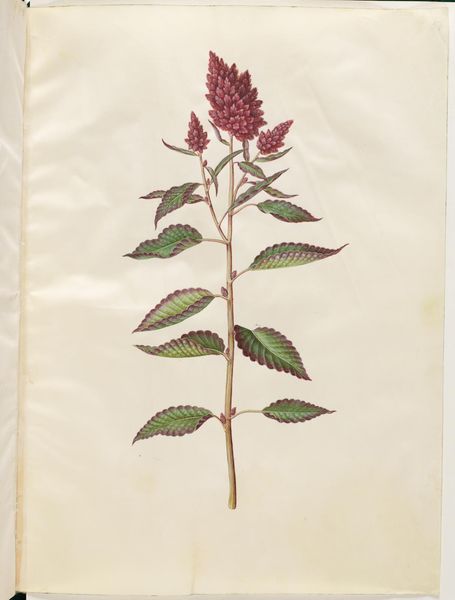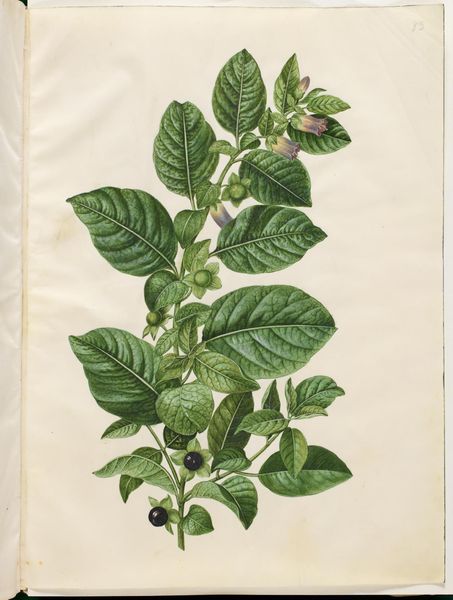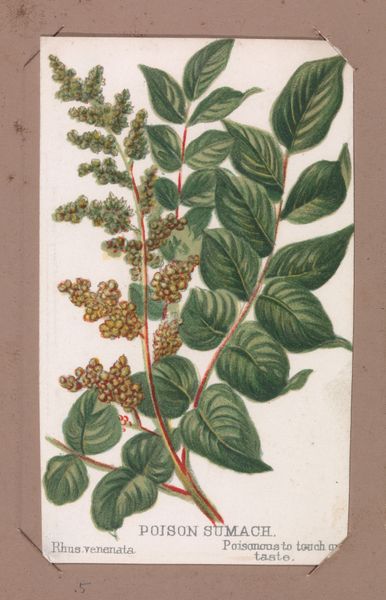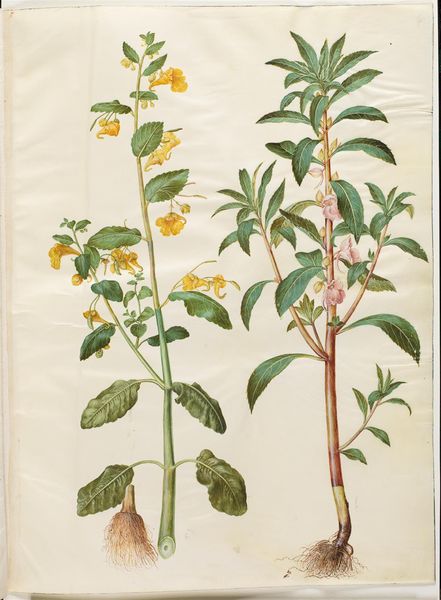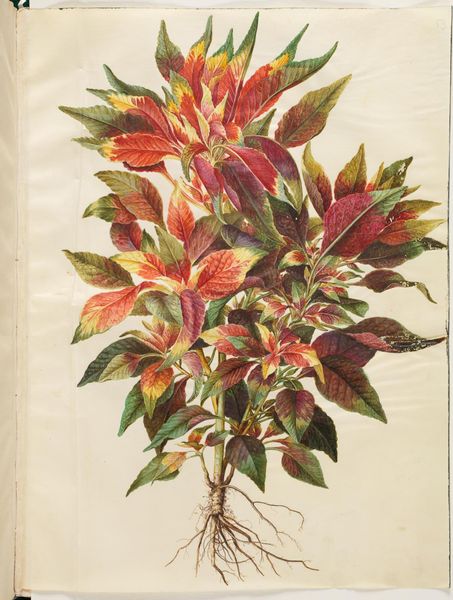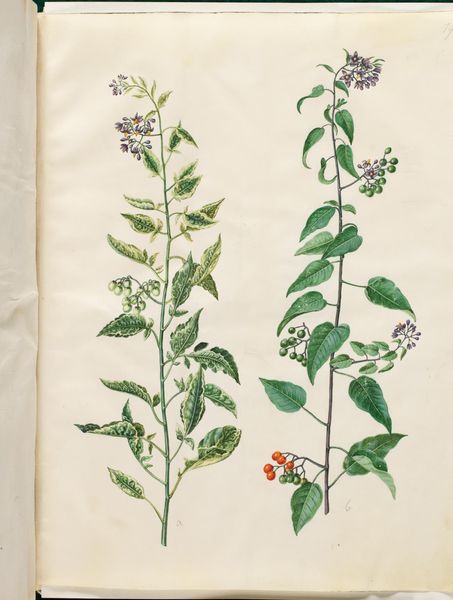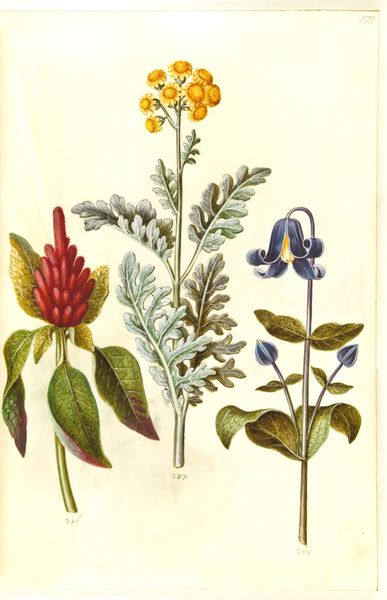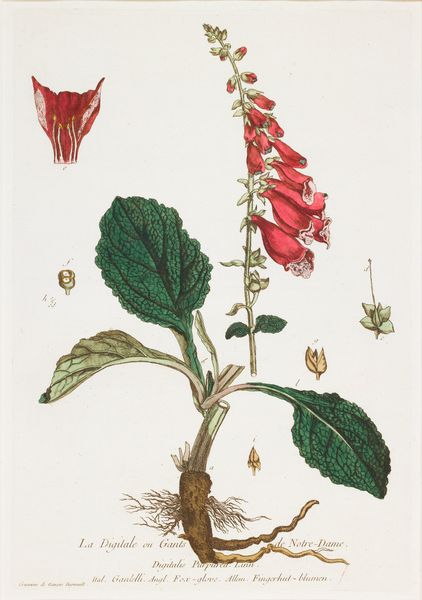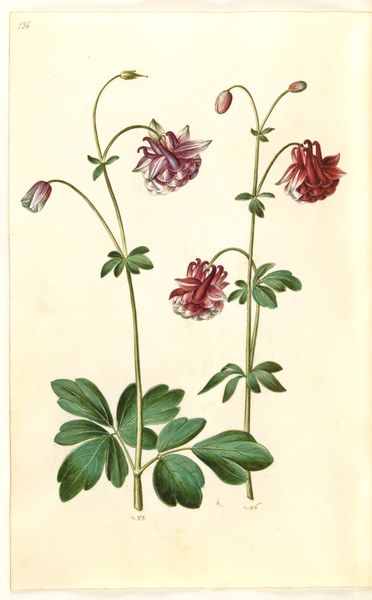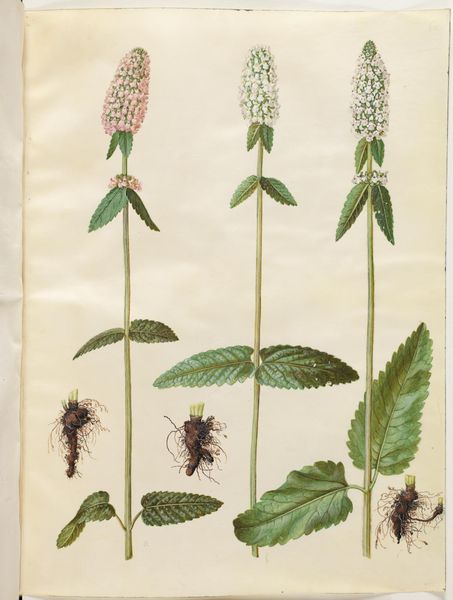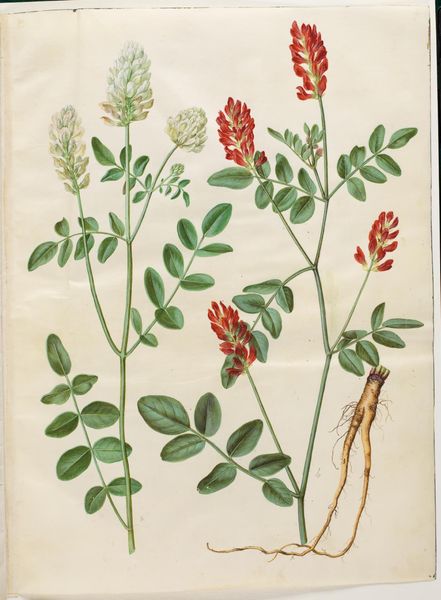
Amaranthus cruentus (rød amarant); Amaranthus caudatus (rævehale-amarant) 1649 - 1659
0:00
0:00
drawing, gouache, watercolor
#
drawing
#
water colours
#
gouache
#
watercolor
#
watercolour illustration
#
genre-painting
#
botanical art
#
watercolor
#
realism
Dimensions: 505 mm (height) x 385 mm (width) (bladmaal)
Curator: Looking at this, I’m struck by its stillness. It's so precisely rendered. Editor: Well, let's orient our listeners. We're viewing a botanical illustration by Hans Simon Holtzbecker. It’s entitled "Amaranthus cruentus (rød amarant); Amaranthus caudatus (rævehale-amarant)" dating back to sometime between 1649 and 1659. It's executed in watercolor and gouache, primarily. What catches your eye beyond that stillness? Curator: The color, definitely. That deep crimson, almost bleeding off the plant. I imagine the creation of this image involved meticulous labor, perhaps in a courtly workshop? We often forget about the sheer materiality involved in creating images for elite patrons. Editor: Yes, the vividness speaks to both Holtzbecker’s technique and the social function of such images. Botanical illustrations like these were not just about scientific accuracy; they were often status symbols, signs of wealth and access to rare plants. They served as a visual inventory of cultivated landscapes, reflecting colonial enterprises. Curator: I hadn't thought of that aspect. The controlled hand that meticulously laid down the watercolors speaks to an elite knowledge base. I agree— the botanical world here turns into more than science; it is about global networks, about access and control. Editor: And consider the paper itself: its source, its production... it all contributed to the final presentation of this specimen, destined to be displayed and perhaps bound in a volume intended to communicate privilege and cultivated taste. Curator: It does invite reflection on how such carefully rendered depictions participate in a broader narrative, a narrative deeply intertwined with trade, power and display. And yet, there is a serene and unpresuming simplicity to the plants that also speaks for the value of nature and wonder. Editor: Precisely. It’s a compelling paradox: an artwork rooted in labor and complex systems that still manages to convey a sense of unadulterated observation. Curator: It prompts us to reflect on the intersections of the scientific, artistic, and economic forces shaping our understanding—and even cultivation—of the natural world.
Comments
No comments
Be the first to comment and join the conversation on the ultimate creative platform.
